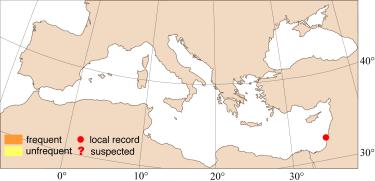
|
Relevant synonyms
Misidentification
Meristic formula
|
|
| photo : David Darom |
|
SHORT
DESCRIPTION
color :
body light brown greenish to grey with yellowish white belly. Many dark spots and bars on the body and on the fins.
size :
common 25-50 cm (max. 70 cm). |
DISTINGUISHING CHARACTERISTICS
Scorpaenidae: clearly continuous dorsal fin.
BIOLOGY / ECOLOGY
habitat :
sandy bottom usually near coral (in its original area) and rocky to depth of 20 m. |
|
1st
MEDITERRANEAN RECORD
|

|
|
DISTRIBUTION
|
ESTABLISHMENT SUCCESS
speculated reasons for success :
|
|
|
MODE OF
INTRODUCTION |
IMPORTANCE TO
HUMANS |
|
KEY
REFERENCES
|